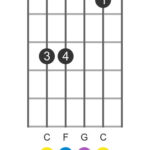The Brazilian guitarfish, a fascinating cartilaginous fish closely related to skates and rays, is a species teetering on the brink. Once abundant off the southern coast of Brazil, this unique creature has faced dramatic population declines, particularly after a devastating collapse in 1986. The primary culprit behind this decline is relentless fishing pressure, especially on vulnerable pregnant females, making the Brazilian guitarfish an endangered species under the Endangered Species Act since 2017, as declared by NOAA Fisheries. These remarkable animals, often referred to as “Guitar Fish” due to their distinctive shape, are a stark reminder of the impact of human activities on marine biodiversity.
Appearance: Distinguishing Features of the Guitarfish
The Brazilian guitarfish is characterized by its muted olive grey to chocolate brown coloration, lacking any prominent light or dark markings that might camouflage it in its environment. Its elongated nostrils and a distinctive “sooty” patch on its snout are key identification features. The crown of its head is transversely flat or subtly convex. Running along its back, a row of large, thorn-like nodules adds to its unique texture. The dorsal fins are triangular, equally sized, and positioned well apart, contributing to the guitarfish’s streamlined shape. As a member of the guitarfish family, it possesses a moderately flattened, elongated body reminiscent of a shark, further enhanced by its wedge-shaped snout. These physical attributes combine to create the characteristic “guitar” shape that lends this group of fishes their common name.
Behavior and Diet: Unveiling the Guitarfish Lifestyle
Much of the Brazilian guitarfish’s behavior and dietary habits remain shrouded in mystery due to limited research. However, insights from a study conducted in Argentina offer some clues. It’s believed that their diet likely consists of Patagonian octopus (Octopus tehuelchus), shrimp (Hymenopeneus muelleri), as well as other decapods, isopods, and polychaetes. This suggests a diet focused on bottom-dwelling invertebrates, typical of many rays and skates that share similar habitats. Further research is needed to fully understand the feeding ecology and broader behavioral patterns of this elusive species.
Where They Live: Habitat and Distribution
The Brazilian guitarfish’s geographical range spans the southwestern Atlantic Ocean, stretching from Rio de Janeiro, Brazil, possibly as far north as Bahia, down to Mar del Plata, Argentina, and potentially even further south. Despite this broad distribution, their population density is highest between 28° S and 34° S in southern Brazil, making this region their true stronghold. Adult Brazilian guitarfish exhibit seasonal migration patterns, inhabiting shallow coastal waters from November to March for pupping and mating. For the remainder of the year, they venture offshore into deeper waters, reaching depths of up to 130 feet. In contrast, newborn and juvenile guitarfish remain in the safety of shallow coastal waters, at depths less than 66 feet, throughout the year, utilizing these areas as crucial nursery grounds.
Lifespan & Reproduction: Life Cycle of the Brazilian Guitarfish
Brazilian guitarfish exhibit notable differences in lifespan between sexes. Females are estimated to live considerably longer, potentially reaching between 14 and 28 years, while males have a shorter lifespan of 10 to 15 years. Reproductively, females are annual breeders, giving birth to litters ranging from 4 to 12 pups after a gestation period of approximately 11 to 12 months. The number of pups is often correlated with the size of the mother, with larger females typically producing larger litters. This relatively slow reproductive rate contributes to their vulnerability, especially when facing high fishing pressure.
Threats: The Shadow of Overfishing
The most significant threat to the Brazilian guitarfish is undeniably overfishing. They are frequently caught as bycatch in both commercial trawl fisheries and artisanal operations employing beach seines and fixed nets. These fishing activities occur year-round throughout their habitat, critically impacting even their nursery grounds. The capture of large numbers of pregnant females in these areas further exacerbates the population decline, hindering their ability to replenish their numbers and recover from the brink of extinction. Effective conservation strategies are urgently needed to mitigate these threats and ensure the survival of this unique “guitar fish”.
Scientific Classification: Taxonomy of Rhinobatos horkelii
| Kingdom | Animalia |
|---|---|
| Phylum | Chordata |
| Class | Chondrichthyes |
| Order | Rhinopristiformes |
| Family | Rhinobatidae |
| Genus | Rhinobatos |
| Species | horkelii |
Last updated by NOAA Fisheries on 11/21/2024


